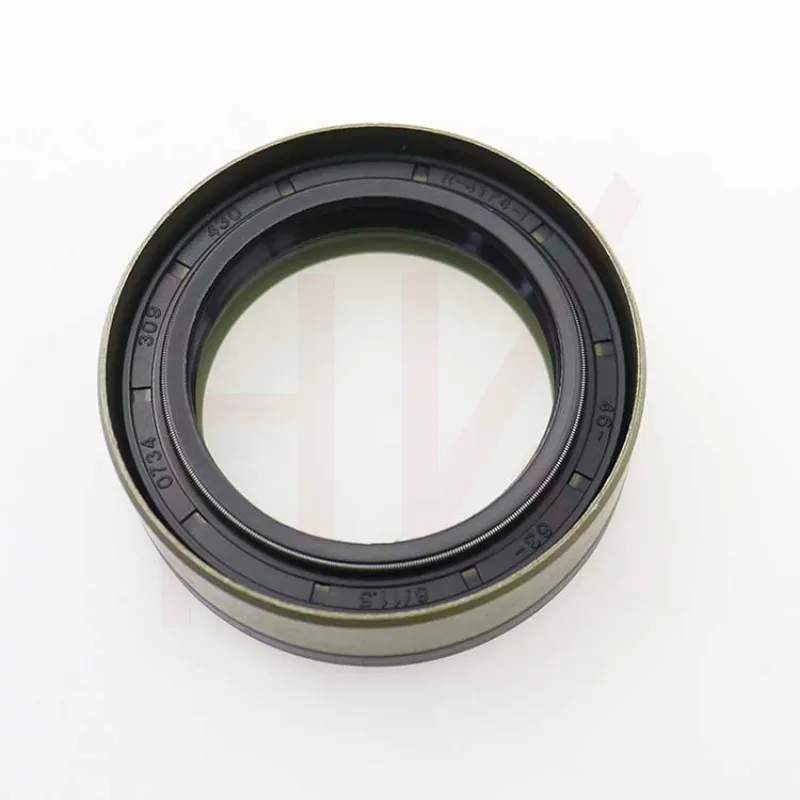Sep . 25, 2024 02:15 Back to list
Wheel Hub Oil Seal Maintenance and Replacement Tips for Optimal Performance
Understanding Wheel Hub Oil Seals Their Importance and Maintenance
In the complex machinery of modern vehicles, every component plays a crucial role in ensuring optimal performance and safety. One such component that often goes overlooked is the wheel hub oil seal. This small yet essential part is integral to the efficient functioning of the wheel assembly, working tirelessly to prevent the loss of lubricants and the entry of contaminants.
What is a Wheel Hub Oil Seal?
A wheel hub oil seal is a critical sealing component located at the junction between the wheel hub and the axle. Its primary function is to retain lubricating oil within the hub area while preventing dirt, dust, and moisture from penetrating the assembly. Typically constructed from durable rubber or synthetic materials, these seals are designed to withstand the harsh conditions of the road, including extreme temperatures and the mechanical stresses from vehicle operation.
The Importance of Wheel Hub Oil Seals
The proper functioning of wheel hub oil seals directly affects the longevity and reliability of the entire wheel assembly. When a seal is functioning correctly, it ensures that the lubricant remains confined, enabling smooth rotations and reducing friction between moving parts. This not only helps in maintaining optimal performance but also contributes to fuel efficiency by minimizing unnecessary energy loss.
Conversely, if a wheel hub oil seal fails, it can lead to catastrophic consequences. A leak can result in lubricant loss, leading to overheating, increased friction, and a subsequent rise in wear and tear on the bearings and other components. Additionally, the ingress of dirt and water can exacerbate these issues, potentially damaging the wheel hub assembly and resulting in expensive repairs.
Signs of a Failing Wheel Hub Oil Seal
wheel hub oil seal

To avoid severe damage, it’s essential for vehicle owners to be vigilant about the condition of their wheel hub oil seals. Common signs of a failing seal include
1. Visible Leaks Puddles of oil underneath the vehicle can indicate a compromised seal.
2. Unusual Noises Grinding or humming noises from the wheel area may suggest that the bearings are not lubricated correctly due to seal failure.
3. Vibration Excessive vibrations while driving can be a sign of bearing failure due to oil loss.
4. Worn Tires Uneven tire wear can occur if the wheel assembly is not functioning properly.
Maintenance and Replacement
To ensure the longevity of wheel hub oil seals, regular maintenance checks are advisable. Inspecting seals during routine tire rotations or annual service can help catch potential issues before they escalate. If a seal is found to be damaged, it is crucial to replace it promptly. The replacement process often involves disassembling the wheel hub assembly, which highlights the importance of professional assistance or service.
In conclusion, wheel hub oil seals may be small components, but their role is vital in the overall health of a vehicle. Regular inspections and timely replacements can prevent costly repairs and ensure a smooth, safe driving experience. Understanding and appreciating these unassuming seals can help car owners maintain their vehicles in top condition for years to come.
-
Wiper Oil Seal: Our Commitment to Clean Hydraulics
NewsAug.13,2025
-
Hydraulic Oil Seal for Self Discharging Cars
NewsAug.13,2025
-
Hub Oil Seal for Agricultural Tractor Hubs
NewsAug.13,2025
-
Skeleton Oil Seal with NBR Material
NewsAug.13,2025
-
Rotary Lip Seal for High Pressure Applications
NewsAug.13,2025
-
Cylinder Seal Kits Our Legacy of Hydraulic Trust
NewsAug.13,2025
-
Unlocking the Potential of Hydraulic Systems with Essential Sealing Solutions
NewsAug.06,2025
Products categories
















